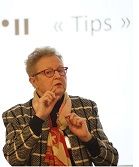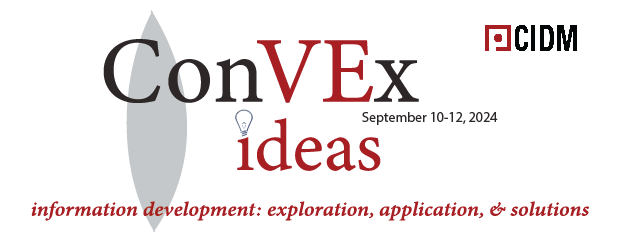Become a CX Expert
Presentation Abstract
Are you aware that in 2016, upper management has no budget for documentation… but for Customer Experience (CX)!
Information developers are best-positioned to support the customer experience development, provided they make all efforts to LEARN about their customers needs for information.
How to become a CX expert?
(1) When searching for customer information, the main problem is the customer location: you don’t know your user, you can’t meet him;
he is in Africa; he is in a DMZ; customers are spread over the planet!
(2) Start selecting various solutions to contact
- the customer. Consider all missed opportunities to collect info such as: training sessions, discussion groups, fairs, on-site visits, product conferences, surveys, webinars
- people knowledgeable about customer such as: hotline, customer support and their “tickets”, marketing
(3) Define “personas”: Max, Mario, Marcel and Milan will help you understand the user’s needs if you
- List their skills, prefered communication channels and working environment. For example what if they are illeterate? if they don’t read work instructions in German… but in Turkish? if they are based in Alaska?
- Focus on their objectives and tasks: playing with the new machine functionalities or achieving the harvest by the end of the day?
(4) Collect, sort and save information
- List tasks and delivery format (paper in a greasy, dark factory? sound files on a noisy ship? videos in the North Pole? on-line help in an Internet-free area? CDs for laptop users?)
- Save the information in a spreadsheet, beginning with the list of tasks… You are now ready to start the documentation project, since your spreadsheet is the starting point of your TOC (Table of Contents) and the information is 100% user-focused.
What can attendees expect to learn?
In this session, participants will learn
– how to contact their users (how to approach an on-duty aircraft pilot nowadays?)
– how to collect information about their users (did you know your African excavator’s operator prefers audio files?)
– how to sort user’s feedback (why are your users not interested in long explanations?)
– how and where to save your valuable information to build your multi-support publication (combining spreadsheet with TOC?)
– how to select your communication channel (did you know users hate CDs, PDFs and videos?)
Based on experience, we can examine various opportunities to get users’ feedback and to design documentation following genuine, close-to-real-life user personas.
Meet the Presenter
 Marie-Louise Flacke is a graduate of the Technical Writing Program at the American University of Paris.
Marie-Louise Flacke is a graduate of the Technical Writing Program at the American University of Paris.
She has worked for a wide range of European organisations in the IT, telecoms, network security, aeronautics and EU institutions. Her achievements have been featured in articles in IEEE Technical Communication Journal, CIDM news, Tekom publications, HEPS 2008 (Healthcare System, Ergonomics and Patient Safety) proceedings, and DITA Europe 2015 publications among others.
Passionate about usability, minimalism and DITA, Marie-Louise is providing training sessions on structured writing, ISO 26 514 compliance and minimalism applied to IoT documentation. Apart from teaching at the Université Catholique de l’Ouest, she also designed training modules for the first French technical writing distance learning program. She is currently developing end-user documentation for Vodafone Automotive Telematics users in Valbonne (France)
